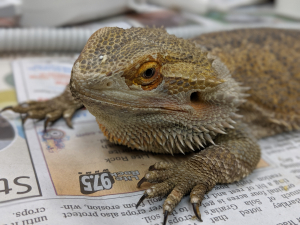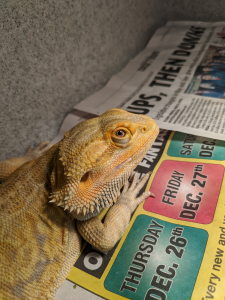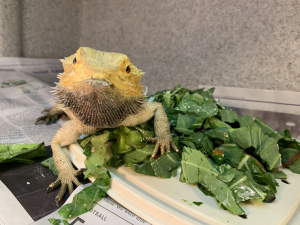Bearded Dragons

The Wildlife Epidemiology Laboratory has a colony of 8 bearded dragons who joined the lab in early 2018. These lively guys and gals are maintained in a temperature-controlled room in separate enclosures. Our students ensure that the dragons are cared for daily including feeding, cleaning and general care.
Some of the research that the dragons are involved in include projects answering questions like :
How does a novel formulation of an anesthetic medication change echocardiographic functions?
Do bearded dragons absorb antifungals when given orally and what is the best dose of antifungals to administer to bearded dragons?
Can thrombocyte-leukocyte rich plasma be harvested from bearded dragon blood? Can that cell rich plasma be used to treat infectious diseases?
What are the normal clinical ophthalmic findings in this species?
Which topical corneal medications cause pupillary dilation (mydriasis)?.

The bearded dragons are easy to work with and are great research and teaching participants, as they work for treats! Their favorite activities are their weekly soaks and biweekly kingworm feedings. We look forward to continuing our primary research with them and contributing to the ever-growing field of knowledge of both wildlife and zoological companion animal care.
